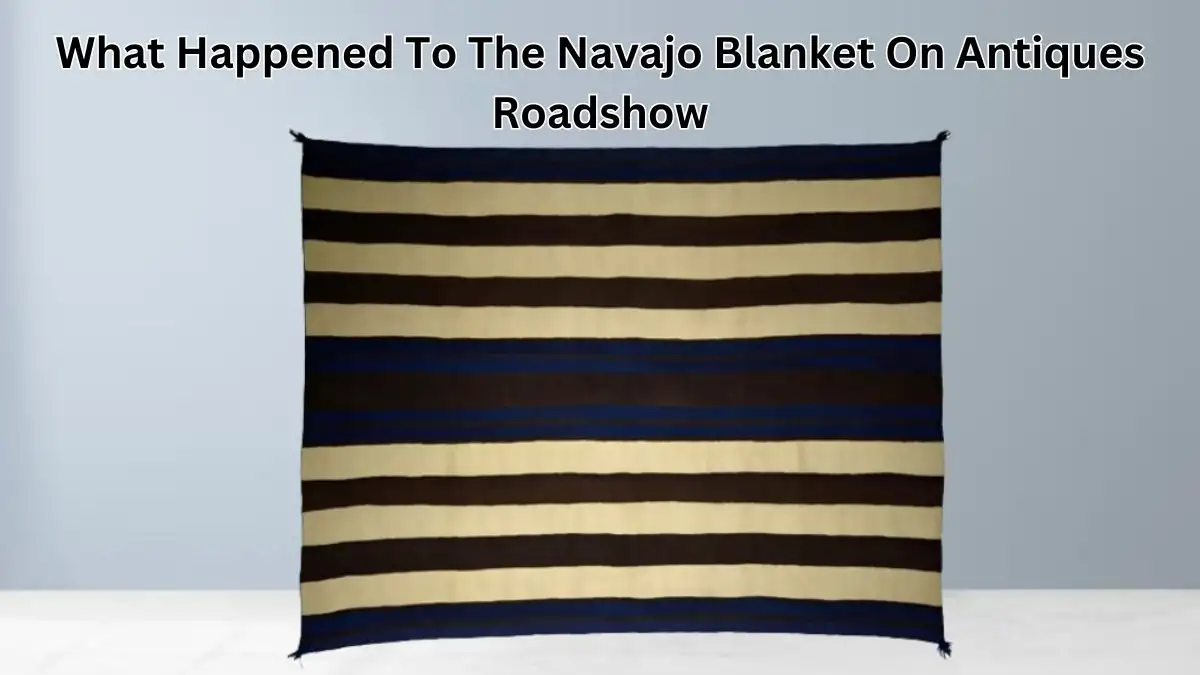What Happened to the Navajo Blanket on Antiques Roadshow?
by Jayasree D
Updated Dec 12, 2023

What Happened to the Navajo Blanket on Antiques Roadshow?
In 2001, a man named Ted Kuntz brought his grandma's blanket to Antiques Roadshow. It turned out to be a rare Navajo Ute First Phase chief's blanket, worth between $350,000 and $500,000. Realizing he couldn't take care of it, Kuntz sold it to an anonymous buyer, who put it in a museum in Detroit. Kuntz used the money to pay off his house but kept working until he was 74.
This blanket was special because Navajo blankets from that time are rare, and "first phase" ones, like Kuntz's, are even rarer—only about fifty exist today. The story inspired others, like Loren Krytzer, who sold a similar blanket for $1.5 million in 2017. However, Krytzer faced legal issues in 2020. The Antiques Roadshow often reveals surprising stories behind ordinary items, making it a fascinating journey for people like Kuntz and Krytzer.
What is a Navajo Blanket?
A Navajo blanket is a traditional woven textile made by the Navajo people, based in the Four Corners area of the United States. These blankets have been crafted for over 150 years and are highly valued for their artistry. Originally, Navajo blankets served as practical items like dresses, saddle blankets, and cloaks, but by the late 19th century, they became sought-after trade items.
The blankets exhibit various phases, each characterized by unique designs and colors. The three main phases are the first, second, and third, with distinctive patterns and additions like red rectangles or diamonds. The making of these blankets marked the Classical period of Navajo weaving, ending around 1880 due to the arrival of cheap manufactured blankets. The blankets have cultural and historical significance, representing the craftsmanship and artistic evolution of the Navajo people.
Navajo Blanket History
The history of Navajo blankets dates back over 150 years and reflects the artistry and cultural evolution of the Navajo people. Originally, Navajo blankets were utilitarian, used for clothing and practical purposes. In the 19th century, they became highly prized trade items, known for their intricate weaving. The blankets went through distinct phases, such as the first, second, and third phases, each characterized by unique designs and colors.
Navajo weaving began in the 17th century, influenced by the Pueblo people. The blankets were not only worn by the Navajos but also traded with other tribes. The arrival of the railroad in the 1880s brought cheap manufactured blankets, marking the end of the Classical period of Navajo weaving. Despite challenges, Navajo weavers continue their craft, preserving a rich cultural tradition that intertwines with their creation myth and cosmology.
Navajo Blanket Purpose
Originally, Navajo blankets served various practical purposes, including clothing items like dresses, saddle blankets, and serapes. They were also used as night covers and even as "doors" at the entrances of Navajo homes. These blankets were woven with care and skill, utilizing wool from the Navajo-Churro sheep, a breed developed by the Navajo.
The blankets had strong geometric patterns, and their purpose extended beyond utility to become highly prized trade items. Over time, especially in the mid-19th century, Navajo weavers began making rugs for non-Native tourists and export. While the function of these blankets was primarily practical, their cultural and economic significance evolved, turning them into sought-after items admired for their artistry and craftsmanship.
About Antiques Roadshow
"Antiques Roadshow" is a popular TV program where people bring their antiques and collectibles to be appraised by experts. The show travels to different cities, and participants hope to discover the value of their items. The experts assess various objects, including furniture, paintings, jewelry, and other heirlooms, offering insights into their historical and monetary worth.
The appraisals often uncover surprising stories about the items' origins. The program provides a mix of entertainment and education, showcasing a wide range of treasures and their unique histories. Participants sometimes learn that their belongings are more valuable than expected, making the show a thrilling experience for both the owners and viewers.
Staying updated on current events has never been simpler. Fresherslive's articles are expertly crafted to break down news in a manner that anyone can easily understand and follow.
What Happened to the Navajo Blanket On Antiques Roadshow-FAQs
The blanket, a rare find, was valued between $350,000 and $500,000, showcasing the craftsmanship of Navajo weavers. Its sale by Ted Kuntz contributed to the preservation of Navajo weaving heritage.
After discovering the blanket's value, Kuntz sold it, using the proceeds to pay off his house. The show's revelation became a life-changing financial opportunity for him.
Only about fifty first-phase Navajo Ute chief's blankets exist today, adding to their rarity. Their scarcity contributes to their high market value and cultural significance.
Despite selling a similar blanket for $1.5 million, Krytzer faced legal issues in 2020, highlighting potential complications associated with valuable antique items.
The show uncovers surprising stories behind ordinary items, turning them into valuable treasures. For participants, it offers unexpected financial opportunities and a deeper appreciation for their belongings' historical and cultural significance.







